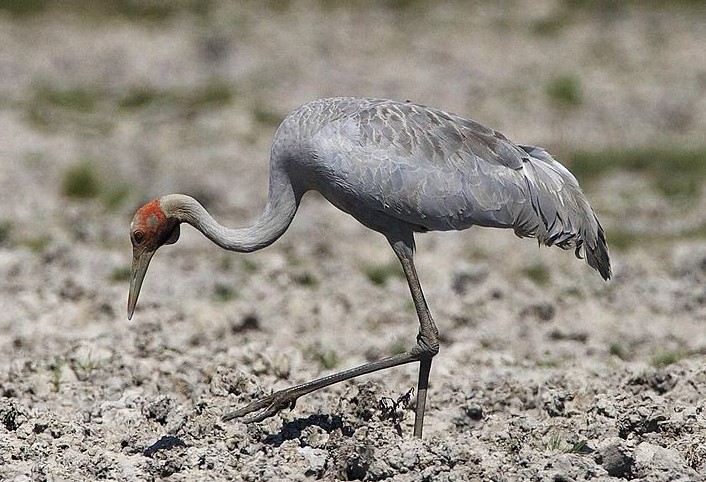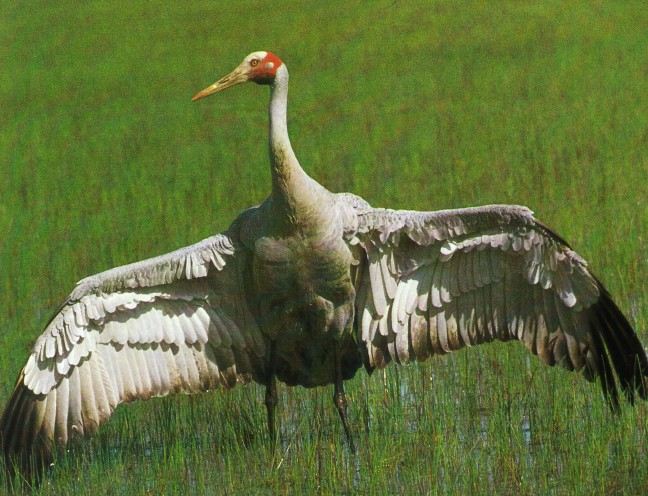There is no more stately Australian bird than the pale grey, long-legged Brolga (Grus rubicundus). It is known as the Australian Crane or Native Companion.
The male bird size is 1050–1250 mm; the female is 950–1150 mm. During the movements, Brolgas line up approximately opposite each other; they stand on stilts with their wings half-opened, shaking. Bowing and bobbing their heads, they advance and retire. Now and then a bird will stop and, throwing back its head, trumpet wildly. Their broad black and grey wings allow them to leap into the air a few meters before parachuting back to the ground. Pieces of twigs and grass are thrown into the air.
During the breeding season, the birds may perform these elaborate dances as part of their courtship display. Dance may help maintain partner bonds. Nesting and breeding occur in September-December in the south and February–June in the north. Nest on a platform of dry grass or sedges 1.5 meters across, in, or beside swampy grasslands.

When Brolgas family groups are no longer breeding, they join others in flocks of several hundred, led and protected by the dominant male. They may wander far and wide in search of food, dispersing around coastal northern Australia and even reaching the Simpson Desert. Flight is graceful, on steadily up-flicking wings, with outstretched necks and legs; the birds soar and spiral almost out of sight on thermal air currents. Brolga lays eggs, usually two; cream with reddish-brown and lavender markings; tapered-oval, about 92 x 61 mm. Incubation is about 28–30 days for both sexes.
On the ground, they roost in groups on residual surface water at night and move out to feed by day. They feed mainly on sedge tubers, which they dig up to 15 centimeters underground with their bills. They also take grain, molluscs, and insects and can pectize cereal crops. As the wet season approaches, Brolga returns to shallow swamplands as breeding grounds and nests in pairs.
Both sexes incubate and care for young who can run and swim within hours of hatching. Usually, they are tended to for a year or longer. It consists of a single trumpeting groom in contact with the speaker. Duetting pair: kaweee-kreeekurr- kurr-kurr-kurr-kurr. Chicks sound is peep.
Both sexes are similar. Pale grey, with primary wing feathers duskier, rump pale grey. Naked crown green-grey; ear coverts grey; dewlap under chin hairy black. The rest of the head has orange to bright red skin. Their eyes are yellow. The bill is long, straight, and green-grey. Legs and feet are dark grey to black. There is no difference between an immature bird and an adult bird. However, the downy young are grey with paler markings; heads covered with buff down; eyes dark brown; feet pink-grey.
The species is known to occur in open swamplands of coastal and subcoastal tropical Australia, which extends to the eastern interior of the country; small local populations are found through the Murray-Darling basin to western Victoria. Also found in southern New Guinea, and vagrant to New Zealand, the Coral Sea, and southwestern Asia. No races.
Read More: American coot (Fulica Americana)







